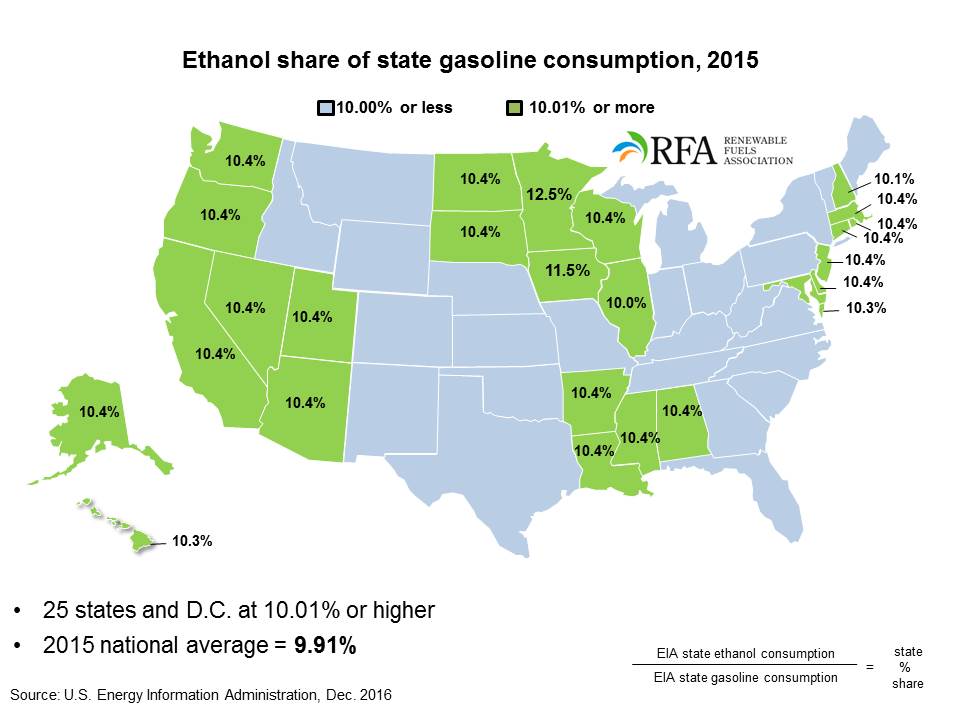New data from the U.S. Department of Energy (DOE) finds that nearly half of the U.S. has broken through the so-called “blend wall” in 2015. Gasoline purchased in 25 states as well as the District of Columbia, contained more than 10 percent ethanol on average. This, says the Renewable Fuels Association (RFA), demonstrates that the spurious “E10 Blend Wall” is crumbling. In 2015, DOE data showed the average ethanol blend rate was 9.91 percent. In response to the data, RFA says its “completely undermines” the proposed legislation to reduce the amount of ethanol content in the country’s fuel supply to no more than 9.7 percent from Reps. Bill Flores (R-Texas) and Peter Welch (D-Vt.).
Based on the 2015 data published by the DOE’s Energy Information Administration, the state with the highest average ethanol blend was Minnesota with 12.5 percent. On average, ethanol fuels such as E85 are available at nearly one out of every eight stations in the state. Iowa comes in second with an average of 11.5 percent up from 10.3 percent in 2014 and 9.5 percent in 2013.
Six coastal states also exceeded 10 percent of ethanol blended into their gasoline including California, Oregon, New Jersey, Massachusetts, Connecticut, and Louisiana, with no states, for the first time ever, having an average ethanol content below 9 percent although Vermont ranked last with 9.18 percent. These numbers are up from 2014 when the national average was 9.83 percent and 22 states plus the District of Columbia were above 10 percent.
RFA President and CEO Bob Dinneen said the DOE data underscore that the Renewable Fuel Standard (RFS) is working as intended to drive increased use of ethanol and other biofuels. “As E15 and ethanol flex fuels like E85 have gained in popularity in recent years, the so-called blend wall has been reduced to a pile of rubble,” Dinneen said. “This data clearly shows that the RFS is delivering on its promise to expand consumer access to lower-cost, cleaner fuel options at the pump. And with EPA putting the RFS back on track in 2017, the share of renewables in our nation’s motor fuel will only continue to grow.”


